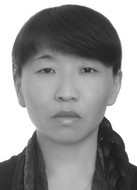Rating benefits of musculoskeletal system disorders prevention and correction method based on motor profiles in judo
Фотографии:
ˑ:
Teoriya i praktika fizicheskoy kultury №1 2018, pp.102-104
Dr.Hab., Associate Professor T.K. Kim1
Applicant A.A. Podlesnykh1
1Moscow State Pedagogical University, Moscow
The intensive growth of competitive martial arts the world over associated with the growing competitiveness at different levels force the sport communities to develop new training methods to improve the quality of the sport human resource, secure high competitive longevity and prevent injuries. The article analyses findings of the experimental study to rate benefits of a new muscular imbalances correction method applied in junior judokas’ training system based on analyses the test data including stabilometric data (balancing function rating data), 3D scans, and muscular functionality tests. The test rates were applied as markers of the junior judokas’ overall and special fitness and their musculoskeletal system functionality. The study data and analyses demonstrated benefits of the motor profiles for tracking the judoka’s motor stereotype formation process including the morphology and functionality of the muscular system and the musculoskeletal system to prevent postural disorders and improve the balancing abilities in standing positions. The findings should be taken into account in the junior judokas’ education and training process.
Keywords: motor profile, method, correction, stabilometry, 3D scanning, junior athletes, judo.
References
- Berdichevskaya E.M. Funktsionalnaya mezhpolusharnaya asimmetriya i sport [Functional interhemispheric asymmetry and sport]. Funktsionalnaya mezhpolusharnaya asimmetriya. Khrestomatiya [Functional interhemispheric asymmetry. Reader]. Moscow: Nauchny mir publ., 2004, pp. 636-671.
- Ivanov V.V. Osobennosti podderzhaniya vertikalnoy pozy v usloviyakh vozdeystviya nekotorykh faktorov vneshney sredy (na primere sportsmenov vysokoy kvalifikatsii s razlichnoy spetsializatsiey i patsientov s narusheniem oporno-dvigatelnogo apparata). Avtoref. dis. kand. med. nauk [Peculiarities of maintaining vertical posture under certain environmental factors (case study of skilled athletes with different specializations and patients with musculoskeletal disorders). PhD diss. abstract]. Moscow, 2009, 24 p.
- Kim T.K., Podlesnykh A.A. Opredelyayuschie cherty metodiki korrektsii myshechnogo disbalansa u yunykh dzyudoistov v protsesse uchebno-trenirovochnoy deyatelnosti i vnetrenirovochny period [Formal characteristics of muscular imbalance correction technique in junior judokas in education and training process and in off-training period]. Uchenye zapiski un-ta im. P.F. Lesgafta, 2016, no. 2 (132), pp. 92-99.
- Lebedev V.M. Teoreticheskoe i prikladnoe znachenie fenomena asimmetrii v sporte [Theoretical and applied importance of asymmetry phenomenon in sports]. Teoriya i praktika fiz. kultury, 1975, no. 4, pp. 28-31.
- Podlesnykh A.A., Kim T.K. Osobennosti proyavleniya myshechnogo disbalansa u dzyudoistov s razlichnym psikhofizicheskim profilem [Specific manifestations of muscular imbalance in judokas with different psychophysical patterns]. Uchenye zapiski un-ta im. P.F. Lesgafta, 2015, no. 12 (130), pp. 160-165.
- Chermit K.D. Simmetriya-asimmetriya v sporte [Symmetry-asymmetry in sports]. Moscow: Fizicheskaya kultura i sport publ., 1992, 256 p.




 Журнал "THEORY AND PRACTICE
Журнал "THEORY AND PRACTICE